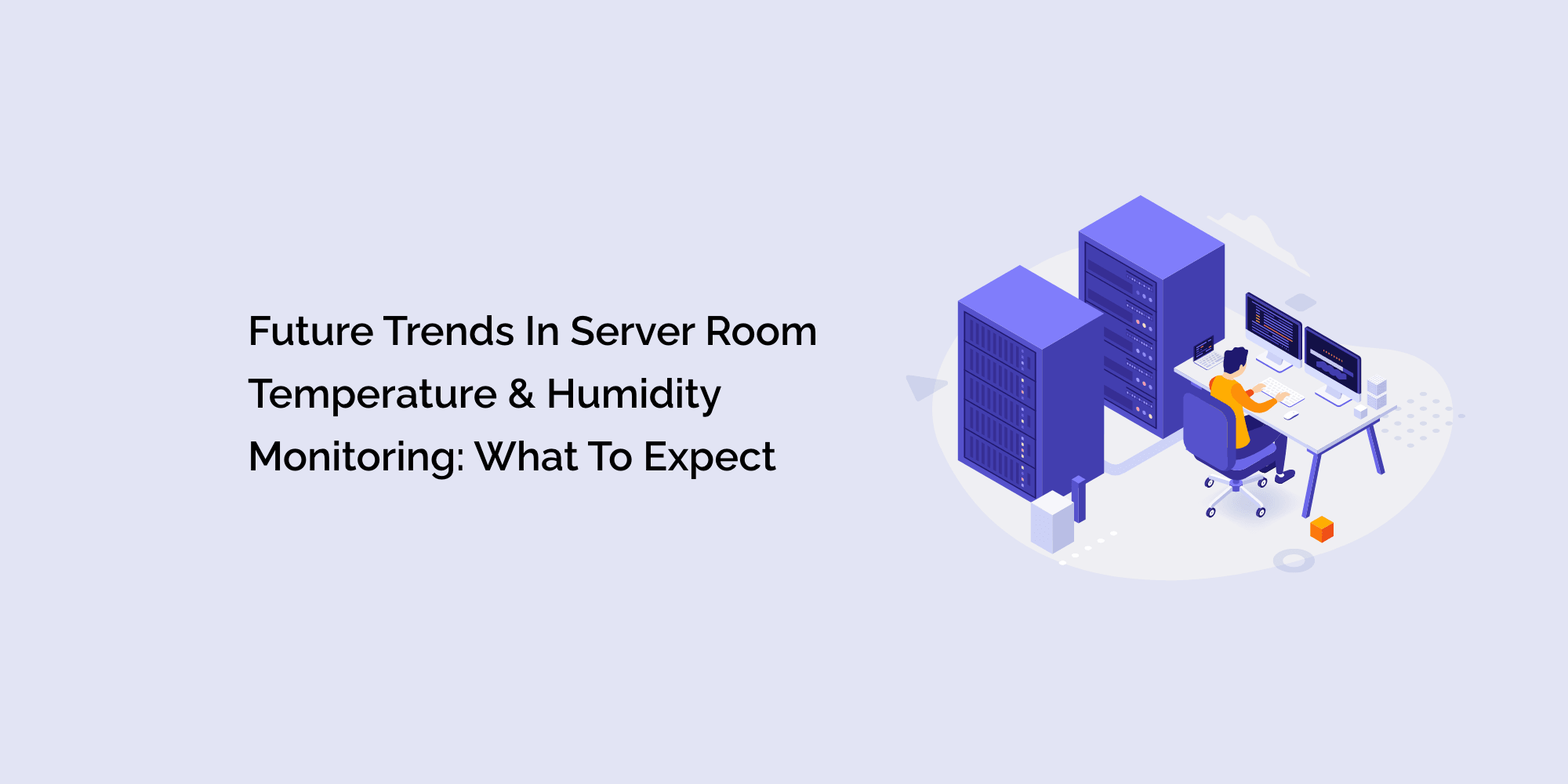Server room temperature and humidity monitoring play a crucial role in maintaining optimal conditions for server performance and reliability. As technology advances and businesses seek more efficient and reliable solutions, it is essential to stay updated on future trends in server room monitoring. In this blog, we will explore emerging technologies and trends that are shaping the future of server room temperature and humidity monitoring. From advancements in sensor technology to the integration of artificial intelligence (AI) and Internet of Things (IoT) capabilities, we will discuss what to expect in the coming years. By embracing these trends, businesses can enhance their monitoring systems, improve energy efficiency, and proactively address potential issues to ensure the smooth operation of their critical IT infrastructure.
Advancements in Sensor Technology
-
Miniaturized Sensors: The development of smaller and more compact sensors allows for easy integration into server racks and tight spaces. These sensors offer enhanced accuracy and precision, providing real-time temperature and humidity readings with minimal intrusion.
-
Wireless Sensor Networks: Wireless sensor networks eliminate the need for extensive wiring and enable flexible sensor placement. This technology simplifies installation, reduces costs, and enhances scalability for server room monitoring systems.
- Multi-Parameter Sensors: Future sensors may combine temperature and humidity monitoring with other environmental parameters such as air quality, pressure, and power consumption. These multi-parameter sensors provide comprehensive insights into server room conditions, enabling more holistic monitoring and proactive management.
Integration of AI and Machine Learning
-
Predictive Analytics: AI and machine learning algorithms can analyze historical data to identify patterns and predict potential temperature and humidity issues. This enables proactive measures to be taken before problems arise, minimizing the risk of downtime and equipment failures.
-
Anomaly Detection: AI-powered systems can continuously analyze real-time sensor data and identify anomalies in temperature and humidity levels. Deviations from normal patterns trigger alerts, allowing for swift investigation and corrective actions.
- Automated Control Systems: AI-driven control systems can dynamically adjust cooling and humidity control mechanisms based on real-time data and predictive models. These systems optimize energy efficiency and maintain server room conditions within the desired range.
Cloud-Based Monitoring and Remote Management
-
Centralized Monitoring: Cloud-based monitoring platforms allow for centralized management of server room temperature and humidity data. Administrators can access real-time data, receive alerts, and perform analysis from any location, enabling remote monitoring and management.
-
Data Visualization and Reporting: Cloud-based platforms offer advanced data visualization and reporting capabilities. Interactive dashboards provide insights into temperature and humidity trends, historical data, and actionable analytics, facilitating informed decision-making.
- Scalability and Integration: Cloud-based solutions provide scalability and easy integration with existing monitoring systems. As businesses expand or upgrade their server infrastructure, cloud-based platforms offer flexibility and adaptability to meet changing monitoring requirements.
Energy Efficiency and Sustainability
-
Smart Cooling Systems: Future trends focus on more intelligent cooling systems that optimize energy consumption based on real-time server room conditions. These systems dynamically adjust cooling levels to match workload demands, reducing energy waste.
-
Renewable Energy Integration: Server rooms may increasingly integrate renewable energy sources, such as solar panels or wind turbines, to power cooling systems and reduce carbon footprints. This trend aligns with the growing emphasis on sustainable practices in data centers.
- Green Data Center Designs: Innovations in server room architecture and airflow management contribute to energy efficiency. Techniques like hot aisle/cold aisle configurations, containment solutions, and advanced insulation help optimize cooling and reduce energy consumption.
Certainly! Here are some frequently asked questions (FAQs) related to future trends in server room temperature and humidity monitoring:
How are advancements in sensor technology shaping the future of server room monitoring?Advancements in sensor technology are enabling the development of smaller, wireless, and multi-parameter sensors. These sensors offer enhanced accuracy, easy integration, and comprehensive monitoring capabilities, allowing for more efficient and precise temperature and humidity monitoring in server rooms.
What is the role of AI and machine learning in server room monitoring?AI and machine learning algorithms analyze historical data and detect patterns to predict potential temperature and humidity issues. These technologies enable proactive measures, anomaly detection, and automated control systems, optimizing server room conditions and minimizing the risk of downtime and equipment failures.
What are the benefits of cloud-based monitoring and remote management?Cloud-based monitoring platforms provide centralized access to real-time data, alerts, and analytics from any location. They offer scalable solutions, advanced data visualization, and reporting capabilities, facilitating remote monitoring, management, and informed decision-making for server room temperature and humidity control.
Conclusion
The future of server room temperature and humidity monitoring is driven by advancements in sensor technology, the integration of AI and machine learning, cloud-based monitoring platforms, and a focus on energy efficiency and sustainability. These trends offer exciting opportunities for businesses to enhance monitoring accuracy, improve operational efficiency, and reduce the risk of downtime and equipment failures. By embracing these future trends, organizations can proactively manage server room conditions, optimize energy usage, and ensure the reliable performance and longevity of their critical IT infrastructure. As technology continues to evolve, it is crucial to stay informed and adopt these advancements to stay ahead in an increasingly interconnected and data-driven world.








